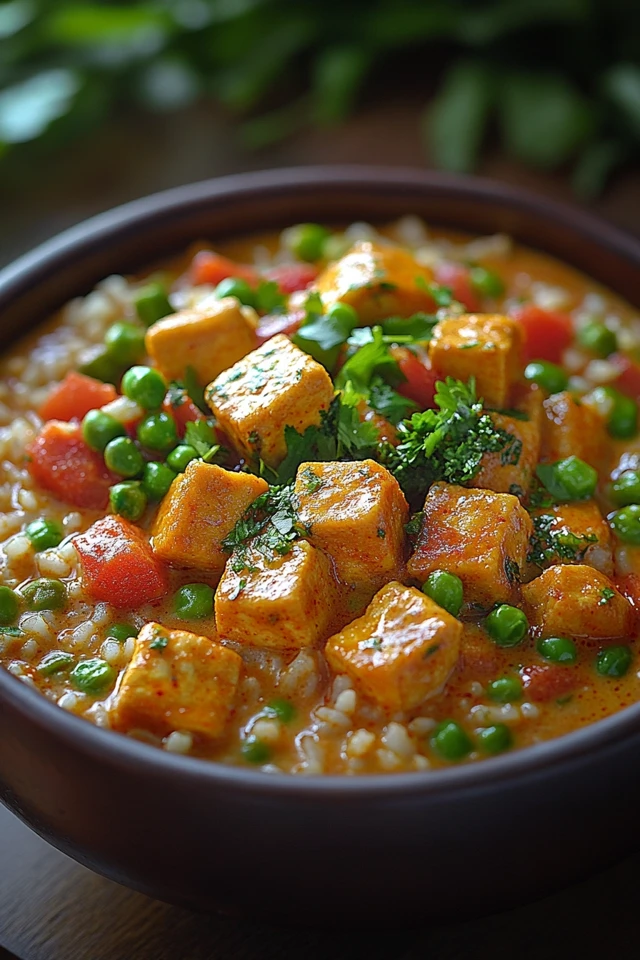Introduction
When the days are cooler and the need for hearty, nourishing meals grows, Coconut Curry with Brown Rice: Fragrant & Comforting stands out as a perfect solution. This dish combines the rich, creamy texture of coconut milk with a blend of aromatic spices and fresh vegetables, creating a harmonious balance of flavors that warm both body and soul. Paired with wholesome brown rice, this curry not only satisfies your taste buds but also provides a nutritious meal that supports overall well-being.
Ideal for vegans, vegetarians, or anyone seeking a flavorful plant-based meal, this coconut curry is versatile, easy to prepare, and endlessly customizable. Whether you’re preparing a weeknight dinner, hosting a gathering, or looking to meal prep for the week, this fragrant and comforting curry is sure to become a staple in your culinary repertoire. In this comprehensive guide, we’ll delve into the benefits of this delightful dish, provide a detailed recipe, and share tips and variations to tailor it to your preferences. Let’s embark on a flavorful journey to create a coconut curry that’s as nourishing as it is delicious!
Why Choose Coconut Curry with Brown Rice?
Opting for Coconut Curry with Brown Rice offers a multitude of benefits that cater to health, ethical, and culinary preferences. Here’s why this dish should be a favorite in your meal planning:
Nutritionally Balanced
- Complete Protein: Incorporating chickpeas or tofu ensures a complete protein profile, essential for muscle maintenance and overall health.
- Rich in Vitamins and Minerals: Vegetables like bell peppers, spinach, and sweet potatoes provide essential vitamins A, C, and K, as well as minerals like potassium and magnesium.
- Healthy Fats: Coconut milk offers medium-chain triglycerides (MCTs), which are known for their metabolism-boosting properties and heart health benefits.
- Whole Grains: Serving the curry with brown rice adds complex carbohydrates and additional fiber, promoting sustained energy levels and digestive health.
Ethical and Sustainable
- Plant-Based: Embracing a plant-based meal reduces your carbon footprint and supports sustainable eating practices, benefiting both your health and the environment.
- Cruelty-Free: Free from animal products, this curry aligns with compassionate lifestyle choices and ethical food preferences.
Versatile and Customizable
- Flavor Adjustments: Easily tweak the spice levels and seasoning to suit your taste preferences, whether you prefer a milder or more fiery curry.
- Ingredient Flexibility: Substitute or add different vegetables, proteins, or grains based on availability and personal preferences, making the recipe adaptable to various dietary needs.
- Serving Options: Serve as a main dish, part of a larger meal, or even as leftovers for a quick and nutritious lunch.
Delicious and Satisfying
- Aromatic Flavors: A blend of spices like turmeric, cumin, and coriander infuse the curry with warm, earthy flavors that are both comforting and exciting.
- Creamy Texture: The coconut milk creates a luscious, creamy sauce that envelops the vegetables and proteins, enhancing the overall mouthfeel of the dish.
Ingredients
Creating Coconut Curry with Brown Rice involves a harmonious blend of creamy coconut milk, a medley of fresh vegetables, aromatic spices, and wholesome brown rice. Here’s what you’ll need:
For the Curry
- Chickpeas: 2 cans (15 oz each), rinsed and drained (or 1 1/2 cups dried chickpeas, soaked and cooked)
- Tofu: 1 block (14 oz), pressed and cubed (optional for added protein)
- Sweet Potatoes: 2 medium, peeled and diced into 1/2-inch cubes
- Bell Peppers: 2, any color, sliced into strips
- Spinach: 4 cups fresh
- Onion: 1 large, finely chopped
- Garlic: 4 cloves, minced
- Fresh Ginger: 2-inch piece, grated
- Coconut Milk: 2 cans (14 oz each)
- Vegetable Broth: 1 cup
- Tomato Paste: 2 tablespoons
- Curry Powder: 2 tablespoons
- Ground Turmeric: 1 teaspoon
- Ground Cumin: 1 teaspoon
- Ground Coriander: 1 teaspoon
- Salt: To taste
- Black Pepper: To taste
- Olive Oil: 2 tablespoons (for sautéing)
For the Brown Rice
- Brown Rice: 2 cups, rinsed
- Water or Vegetable Broth: 4 cups
- Salt: 1/2 teaspoon
Optional Add-ins and Toppings
- Fresh Cilantro: 1/4 cup, chopped
- Lime Wedges: For serving
- Toasted Almonds or Cashews: 1/4 cup, for added crunch
- Hot Sauce or Sriracha: For a spicy kick
- Avocado Slices: For added creaminess
Ingredient Breakdown
- Chickpeas and Tofu: Provide plant-based proteins essential for a balanced meal.
- Sweet Potatoes and Bell Peppers: Add natural sweetness, vibrant colors, and essential nutrients.
- Spinach: Introduces fresh greens rich in vitamins and minerals.
- Coconut Milk: Creates a creamy, rich sauce infused with healthy fats.
- Spices: Infuse the curry with warm, aromatic flavors that are quintessential to a delightful curry experience.
- Brown Rice: Serves as a wholesome, fiber-rich base that complements the rich flavors of the curry.
Instructions
Preparing Coconut Curry with Brown Rice is straightforward and yields a delicious, comforting meal perfect for any occasion. Follow these step-by-step instructions to create a fragrant and satisfying curry in about 1 hour and 15 minutes.
Step 1: Cook the Brown Rice
- Prepare the Rice:
- In a medium saucepan, combine 2 cups of rinsed brown rice, 4 cups of water or vegetable broth, and 1/2 teaspoon of salt.
- Cook:
- Bring to a boil over medium-high heat. Once boiling, reduce the heat to low, cover, and let it simmer for about 45 minutes, or until the rice is tender and the liquid is absorbed.
- Fluff and Set Aside:
- Remove from heat and let it sit, covered, for an additional 10 minutes. Fluff the rice with a fork before serving.
Step 2: Prepare the Curry Base
- Sauté Aromatics:
- In a large pot or Dutch oven, heat 2 tablespoons of olive oil over medium heat.
- Add the finely chopped onion and sauté for about 5 minutes until translucent and softened.
- Stir in the minced garlic and grated ginger, cooking for an additional 1-2 minutes until fragrant.
- Add Spices:
- Sprinkle in the curry powder, ground turmeric, ground cumin, and ground coriander.
- Stir continuously for about 1 minute to toast the spices and enhance their flavors.
Step 3: Incorporate Vegetables and Proteins
- Add Sweet Potatoes and Bell Peppers:
- Toss in the diced sweet potatoes and sliced bell peppers.
- Stir to coat the vegetables evenly with the spice mixture.
- Add Chickpeas and Tofu:
- Pour in the rinsed and drained chickpeas.
- If using tofu, add the cubed pieces to the pot.
- Mix well to combine all the ingredients.
Step 4: Simmer the Curry
- Add Liquids:
- Pour in the coconut milk and vegetable broth.
- Stir in the tomato paste until fully dissolved.
- Season:
- Add salt and black pepper to taste.
- Simmer:
- Bring the mixture to a gentle boil, then reduce the heat to low.
- Cover and let it simmer for about 20-25 minutes, or until the sweet potatoes are tender and the flavors have melded together.
Step 5: Finalize the Curry
- Add Spinach:
- Stir in the fresh spinach leaves, allowing them to wilt and integrate into the curry.
- Adjust Seasoning:
- Taste and adjust the seasoning with additional salt, pepper, or spices as needed.
- Optional Heat:
- For a spicier curry, add a dash of hot sauce or a pinch of red pepper flakes at this stage.
Step 6: Serve and Enjoy
- Plate the Rice:
- Spoon a generous portion of brown rice onto each plate or bowl.
- Top with Curry:
- Ladle the creamy coconut curry over the brown rice.
- Garnish:
- Sprinkle with fresh cilantro, toasted nuts, and add a squeeze of lime juice for an extra burst of flavor.
- Add avocado slices or a drizzle of tahini for added creaminess if desired.
- Serve:
- Serve immediately while warm, accompanied by lime wedges on the side.
Tips and Variations
Enhance your Coconut Curry with Brown Rice with these helpful tips and creative variations:
1. Experiment with Different Proteins
- Lentils: Substitute chickpeas with green or brown lentils for a different texture and protein source.
- Tempeh: Use cubed tempeh for a nutty flavor and added protein.
2. Add More Vegetables
- Cauliflower: Add cauliflower florets for extra bulk and nutrients.
- Carrots: Incorporate sliced carrots for sweetness and color.
3. Spice It Up
- Coconut Aminos: Add a splash of coconut aminos for a savory depth.
- Fresh Chilies: Introduce sliced fresh chilies for a fiery kick.
4. Make It Creamier
- Coconut Cream: Replace some of the coconut milk with coconut cream for an even richer texture.
- Cashew Cream: Blend soaked cashews with water to create a creamy, dairy-free addition.
5. Enhance the Flavor
- Lime Zest: Add lime zest to the curry for a fresh, citrusy note.
- Fresh Herbs: Incorporate fresh basil or mint for a unique herbal twist.
6. Incorporate Superfoods
- Turmeric: Add an extra teaspoon of turmeric for its anti-inflammatory benefits.
- Chia Seeds: Sprinkle chia seeds on top for added omega-3 fatty acids.
7. Create a One-Pot Meal
- Add Quinoa: Mix cooked quinoa into the curry for a complete, protein-packed meal.
- Include Greens: Add kale or Swiss chard along with spinach for more greens.
8. Make It Ahead
- Batch Cooking: Prepare the curry in advance and store it in the refrigerator for up to 5 days. Reheat before serving.
- Freezing: Freeze individual portions of the curry for up to 3 months. Thaw in the refrigerator overnight before reheating.
9. Customize the Rice
- Brown Basmati Rice: Use brown basmati rice for a fragrant alternative.
- Wild Rice: Substitute with wild rice for a nuttier flavor and chewier texture.
10. Garnish Creatively
- Nori Strips: Add thin strips of nori for an umami boost.
- Dried Fruits: Sprinkle dried cranberries or raisins for a sweet contrast.
Nutritional Information
Understanding the nutritional profile of your meals helps you make informed dietary choices. Here’s the approximate nutritional breakdown for one serving of the Coconut Curry with Brown Rice (serves 6):
Per Serving:
- Calories: 450 kcal
- Protein: 15g
- Carbohydrates: 60g
- Fiber: 10g
- Fat: 18g
- Saturated Fat: 10g
- Sugar: 8g
- Sodium: 500mg
Nutritional Highlights:
- High in Protein: Chickpeas and tofu provide a substantial protein boost, essential for muscle maintenance and overall health.
- Healthy Fats: Coconut milk and olive oil contribute heart-healthy fats that support cardiovascular health and enhance satiety.
- Rich in Vitamins and Minerals: The variety of vegetables supplies vitamins A and C, potassium, iron, and magnesium, essential for various bodily functions.
- Antioxidants: Turmeric and other spices are loaded with antioxidants that combat oxidative stress and support immune function.
Adjusting Nutritional Content:
- Lowering Calories: Reduce the amount of coconut milk or olive oil used in the recipe. Opt for a sugar substitute like stevia or monk fruit sweetener to decrease the sugar content.
- Increasing Protein: Add more chickpeas, incorporate a scoop of vegan protein powder into the curry, or include additional vegan protein sources like lentils or tempeh.
- Reducing Sodium: Use low-sodium vegetable broth and chickpeas, and adjust the added salt based on your dietary needs.
Conclusion
The Coconut Curry with Brown Rice: Fragrant & Comforting is a delightful fusion of creamy coconut milk, aromatic spices, and wholesome brown rice, creating a meal that’s both nourishing and indulgent. This dish not only caters to gluten-free and plant-based dietary needs but also delivers a flavorful and satisfying experience that can be enjoyed year-round. Whether you’re preparing a family dinner, hosting a festive gathering, or looking for a nutritious meal to fuel your day, this coconut curry offers versatility, ease of preparation, and endless customization options to suit your preferences.
Embrace the rich, aromatic flavors of coconut and spices with this comforting curry that supports your health and delights your taste buds. Experiment with different vegetables, proteins, and spices to make the recipe your own, and enjoy the wholesome goodness that comes with every bite. Here’s to delicious, fragrant, and nourishing meals that bring warmth and joy to your table!
Picture Gallery
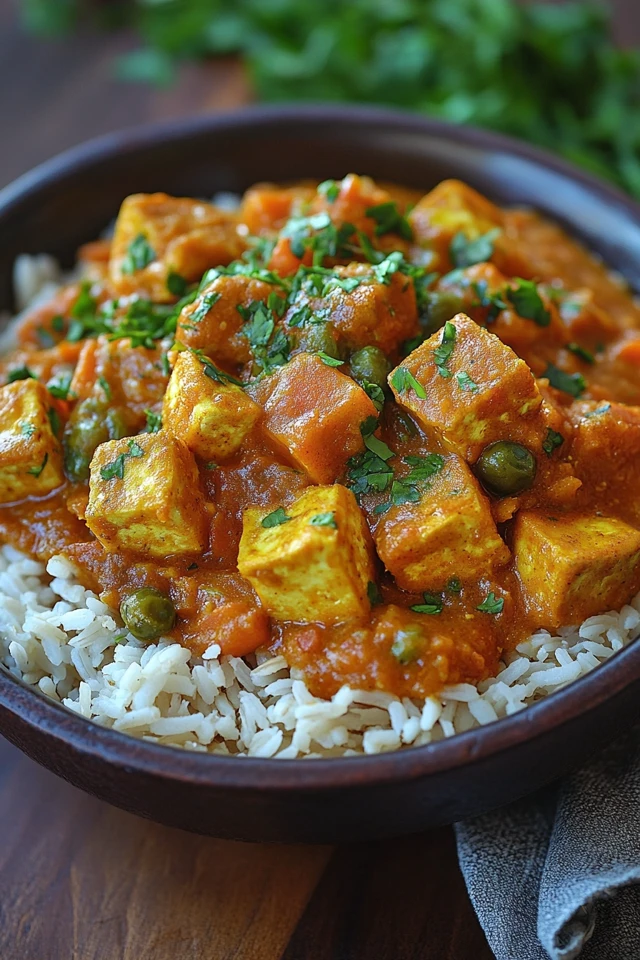
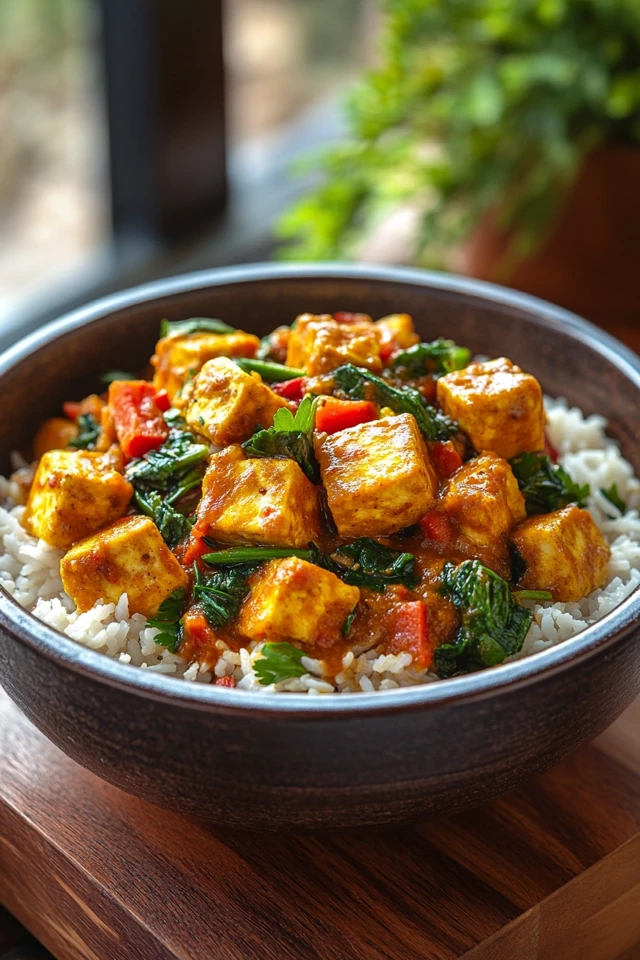
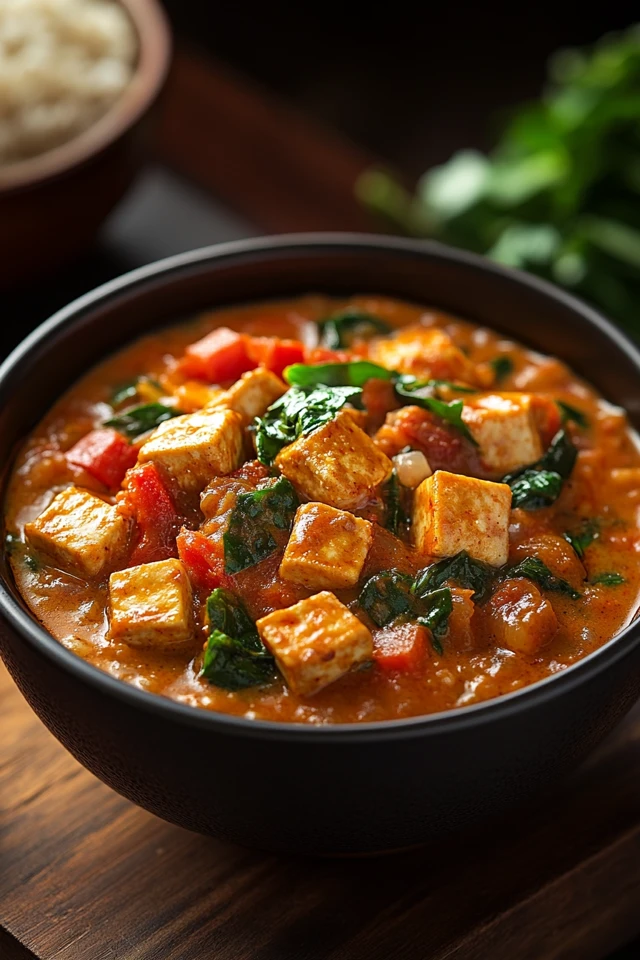
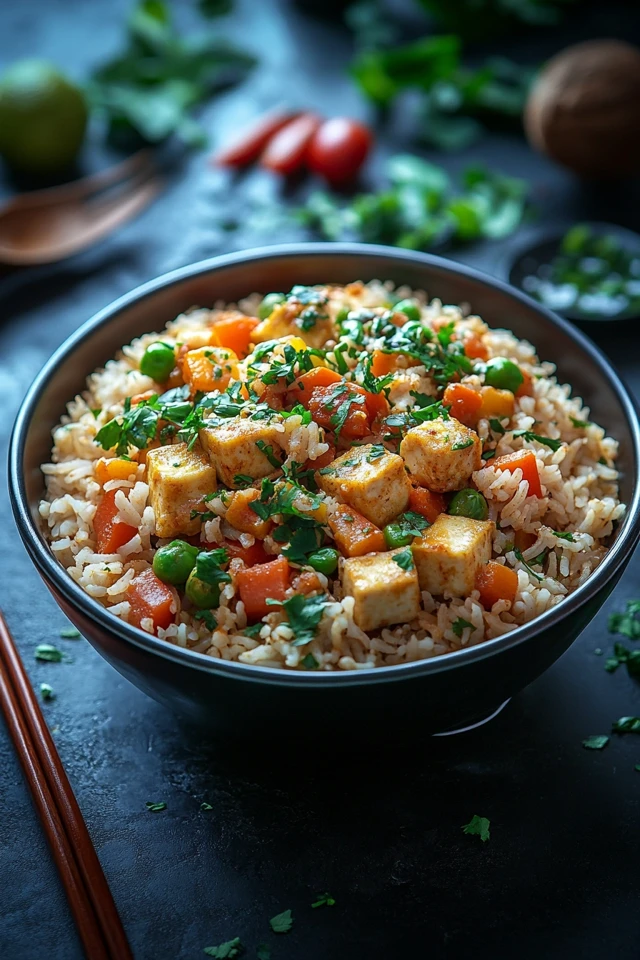
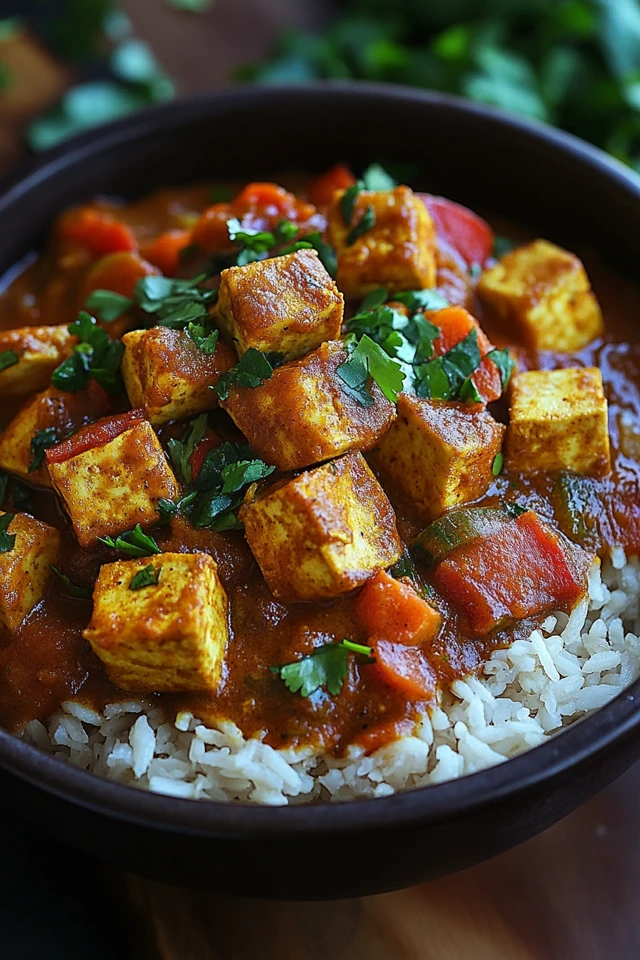
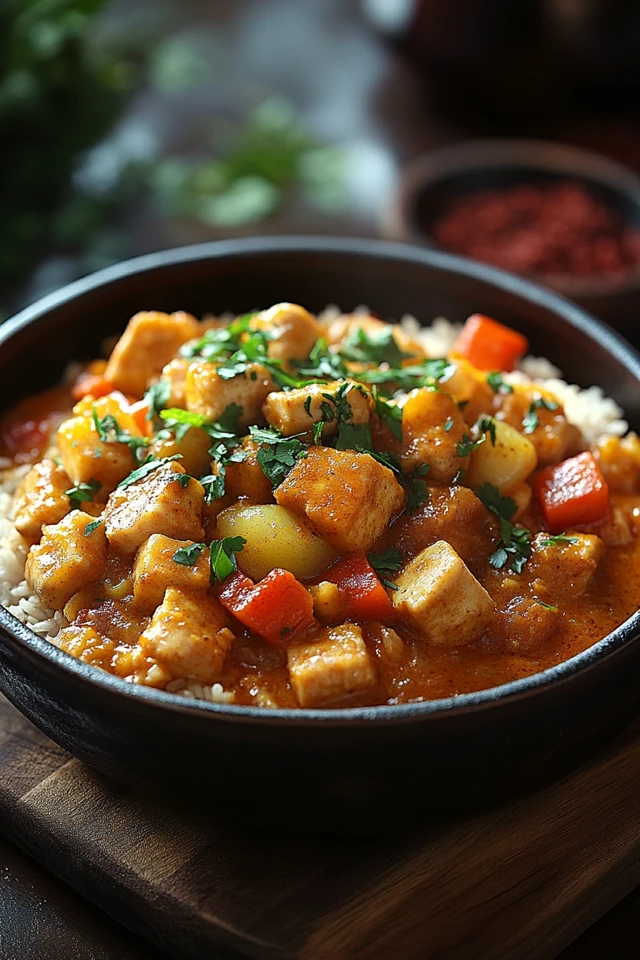
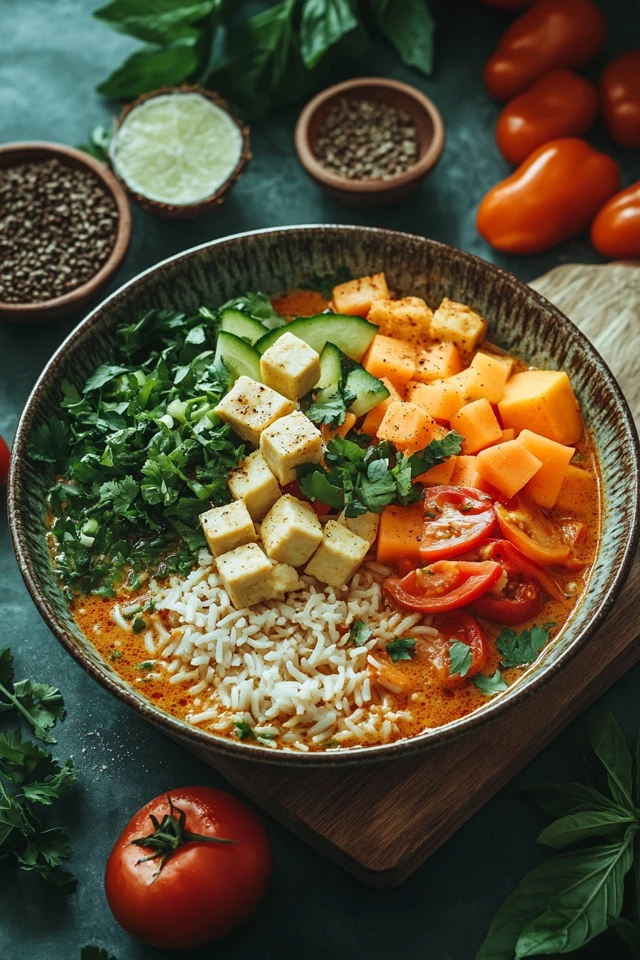
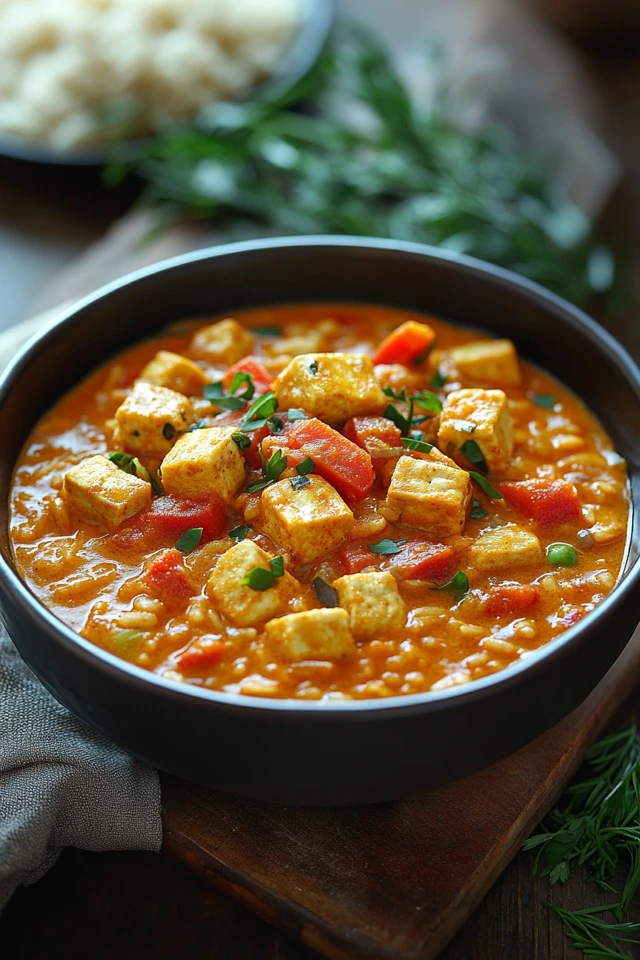
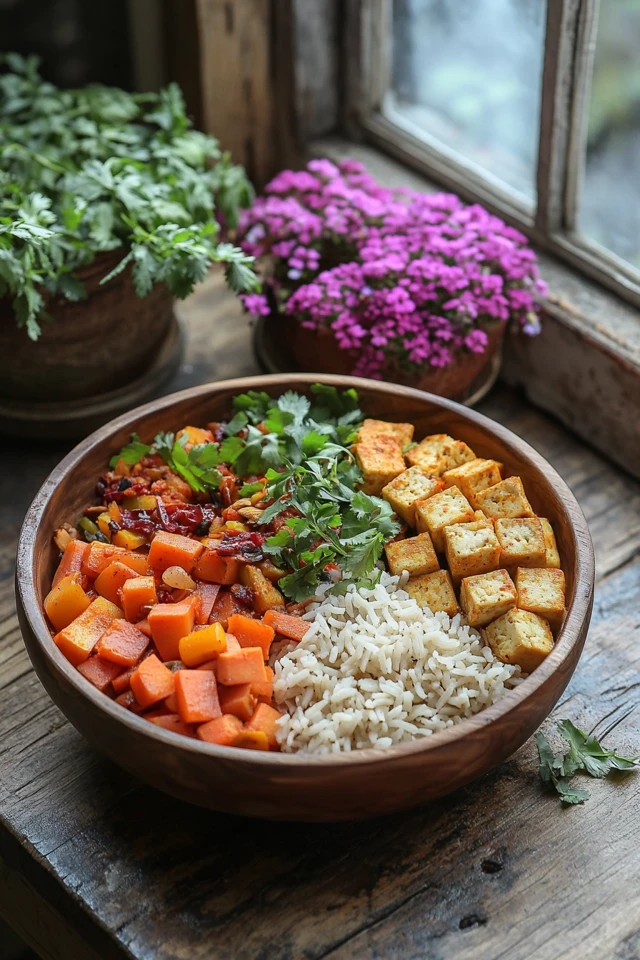

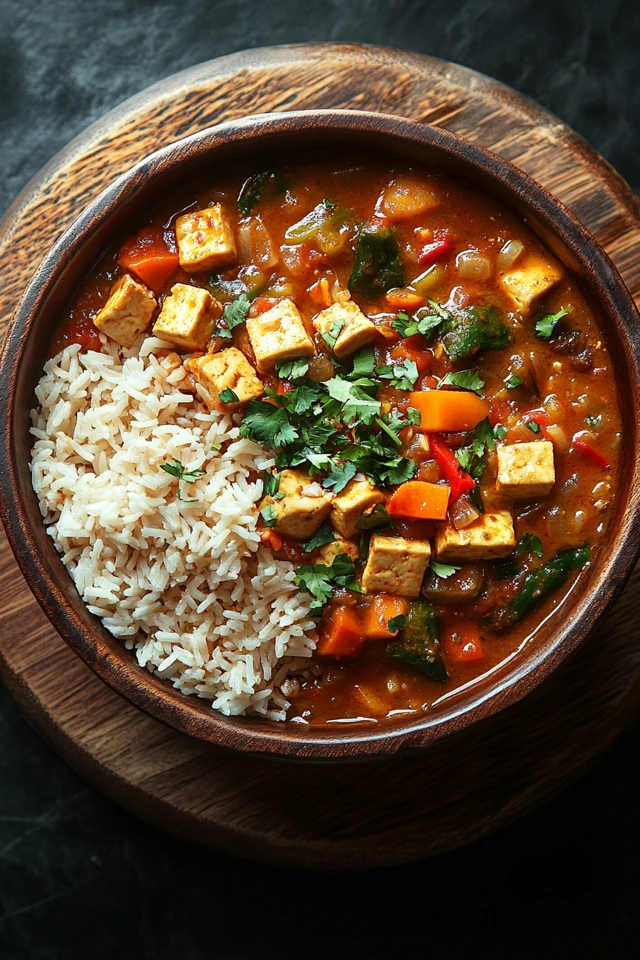
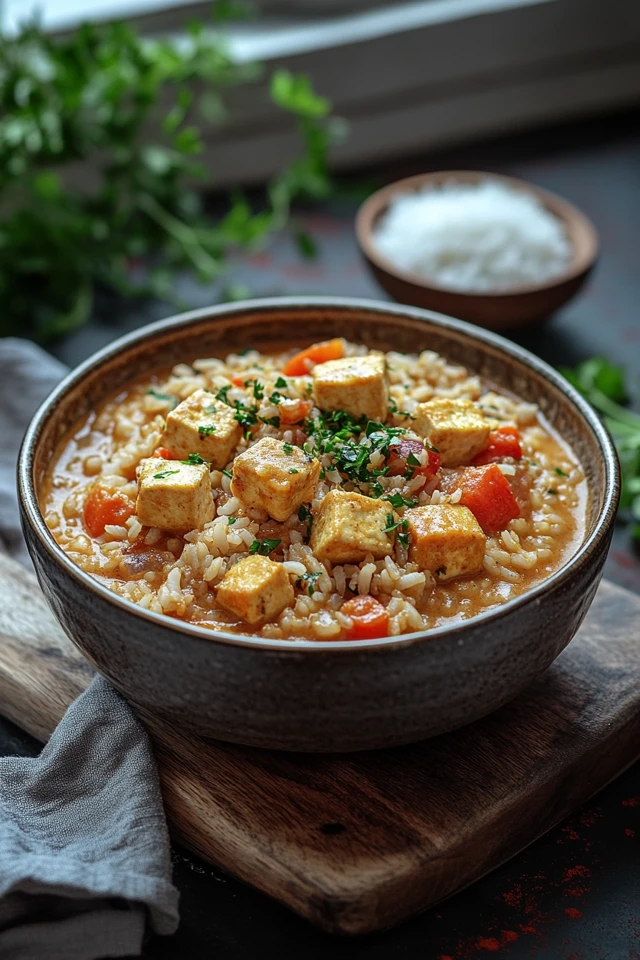
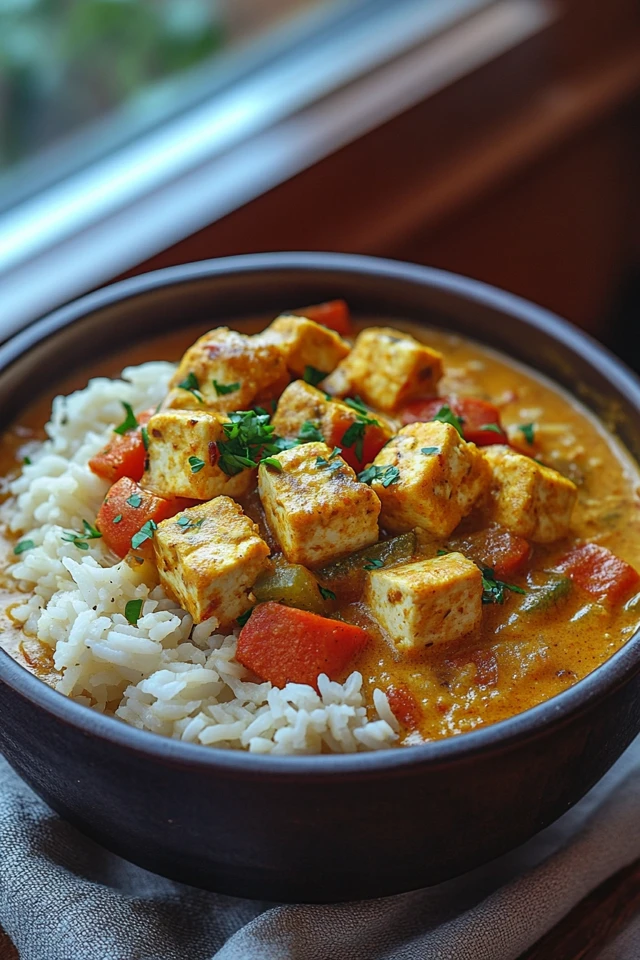
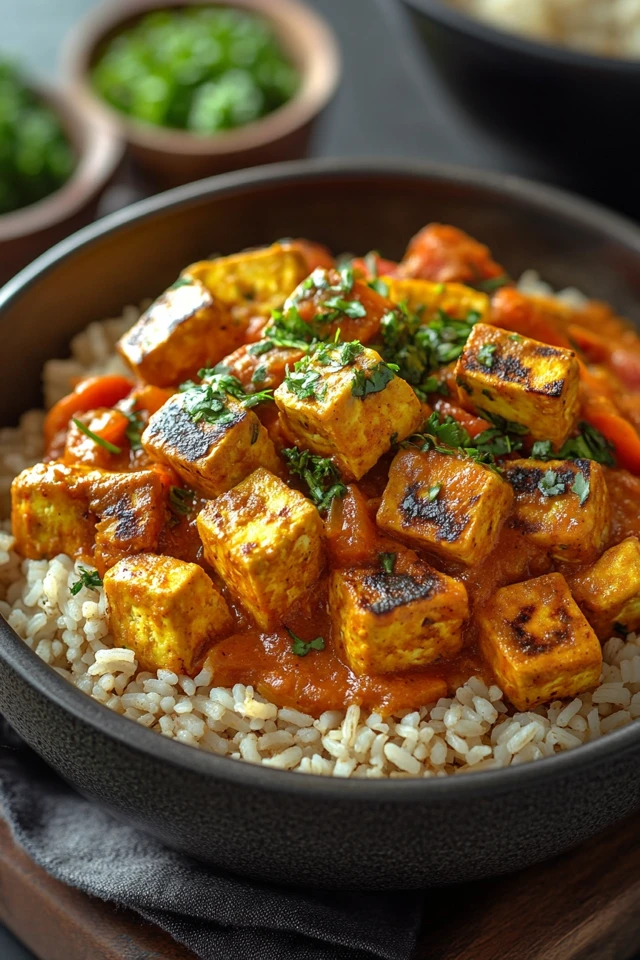
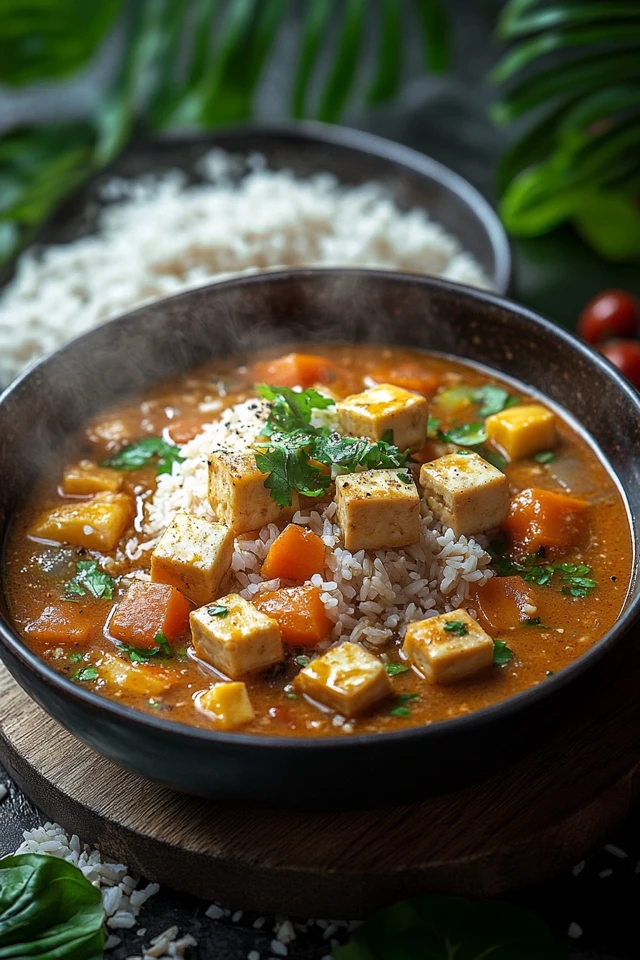
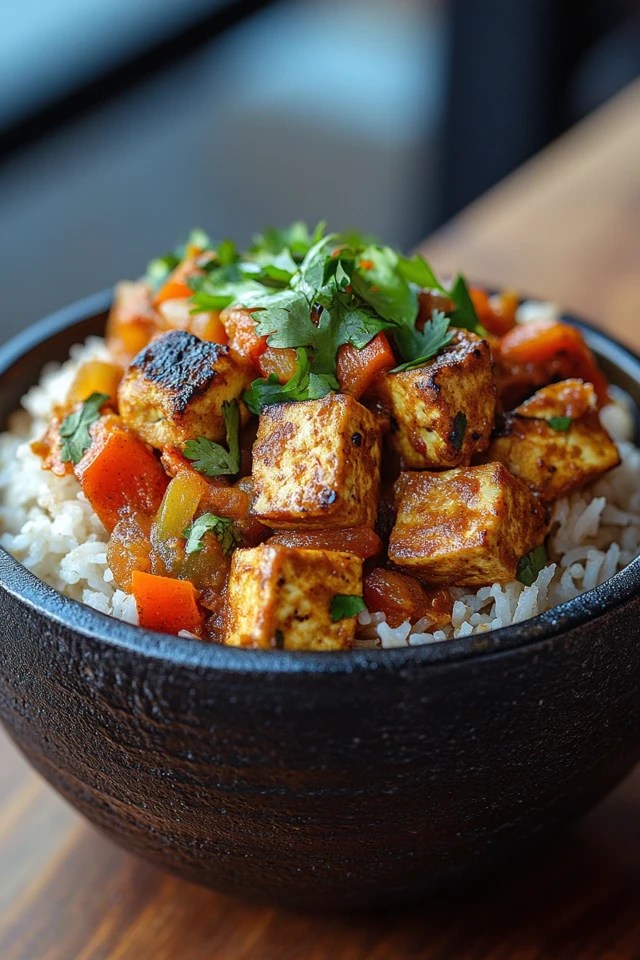
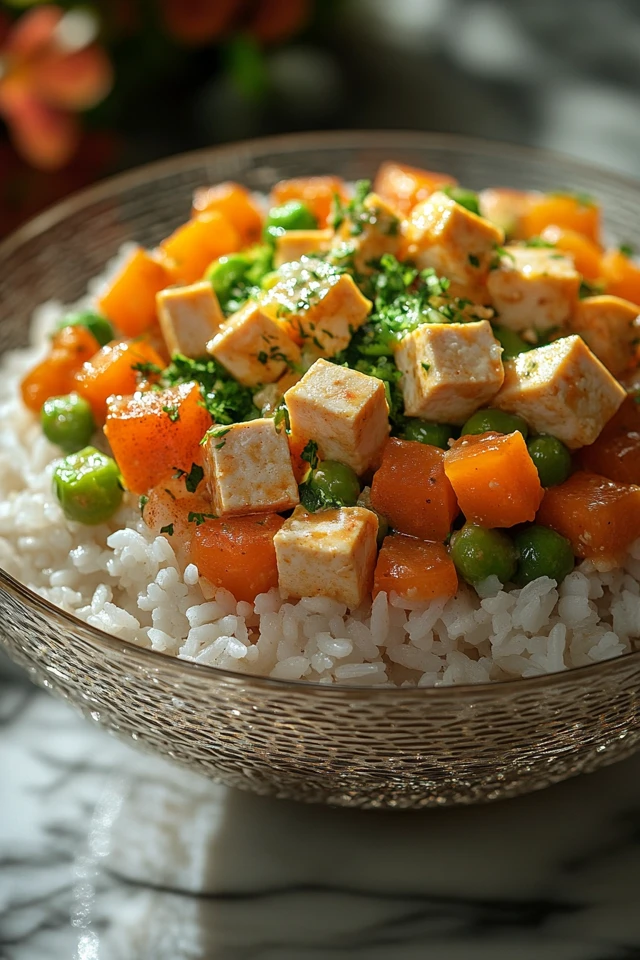
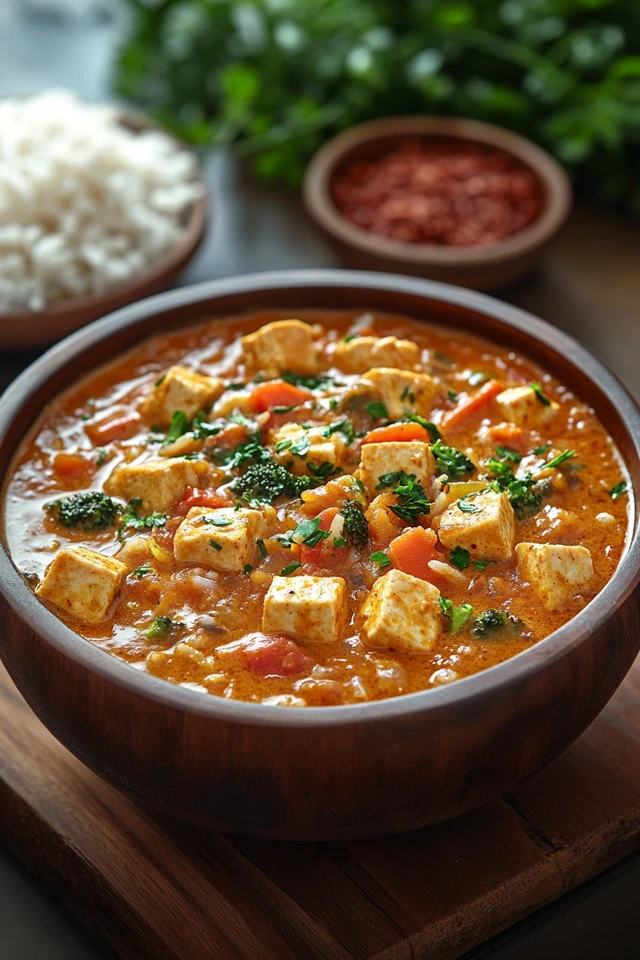
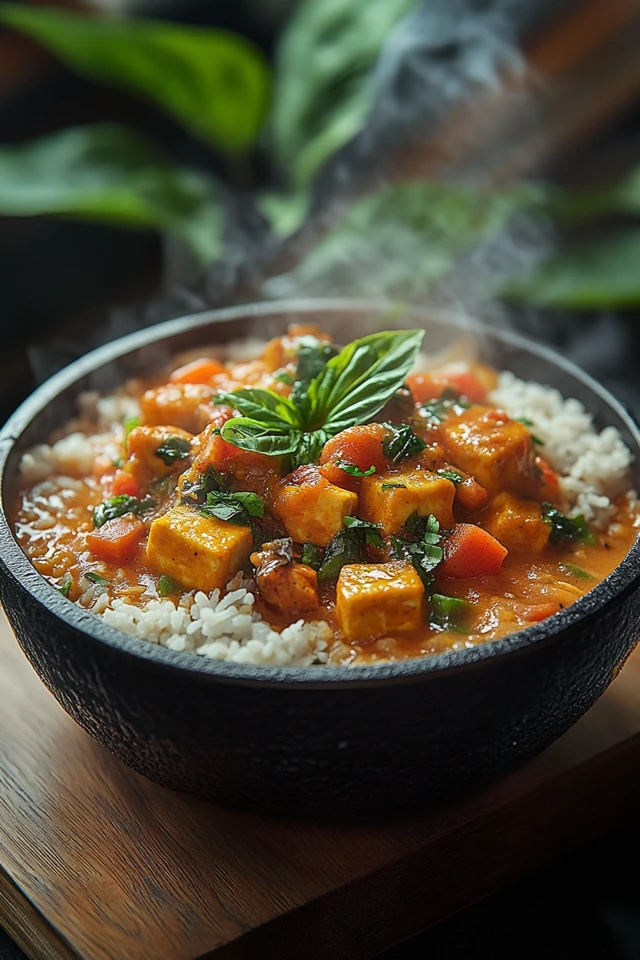
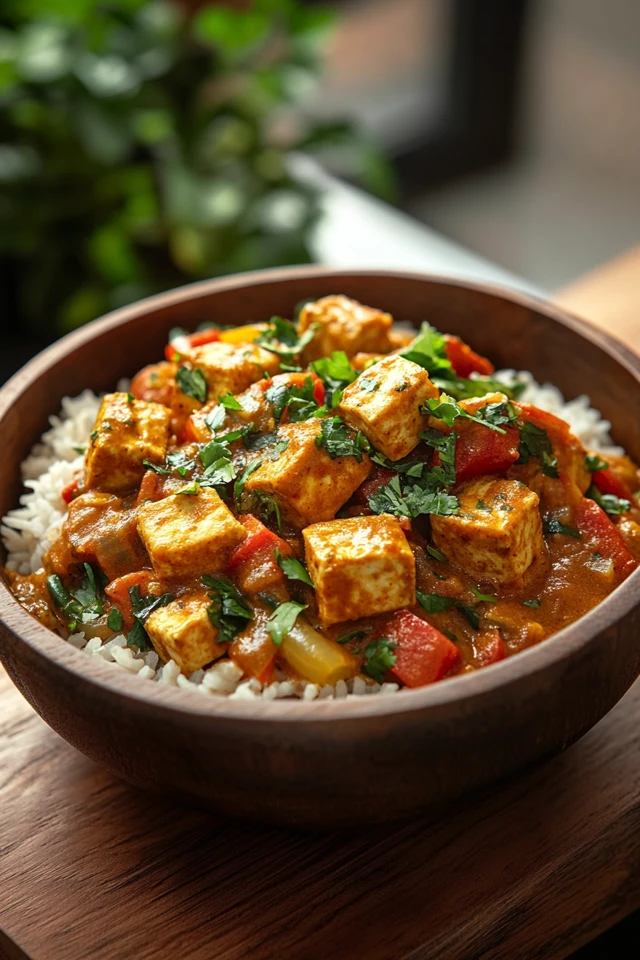
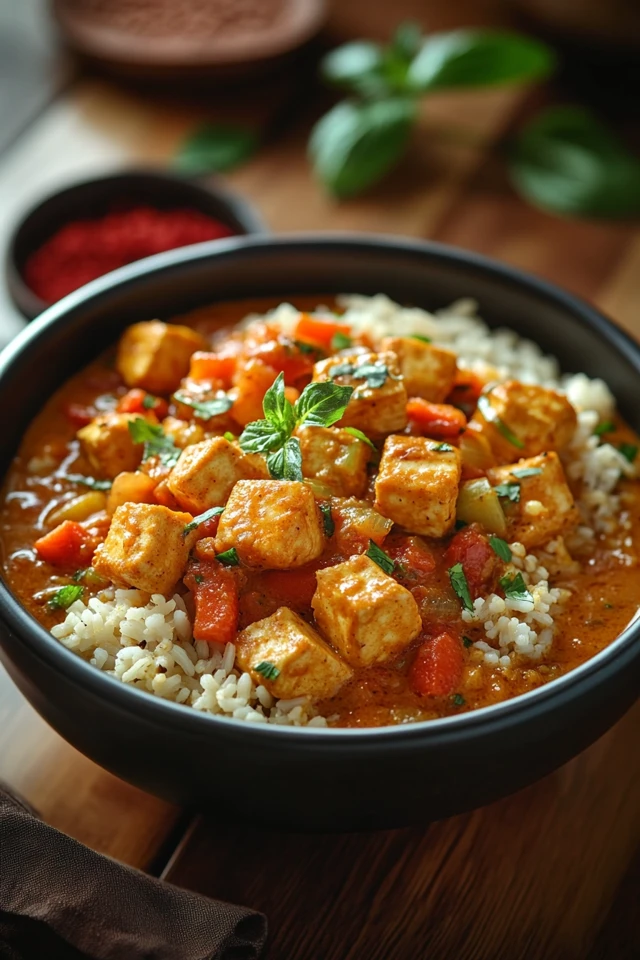
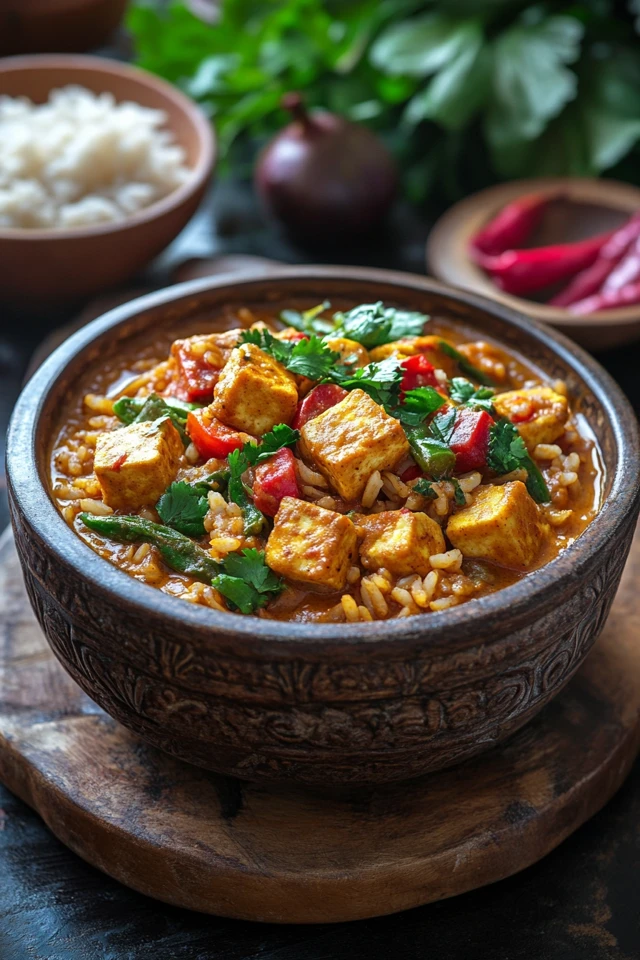
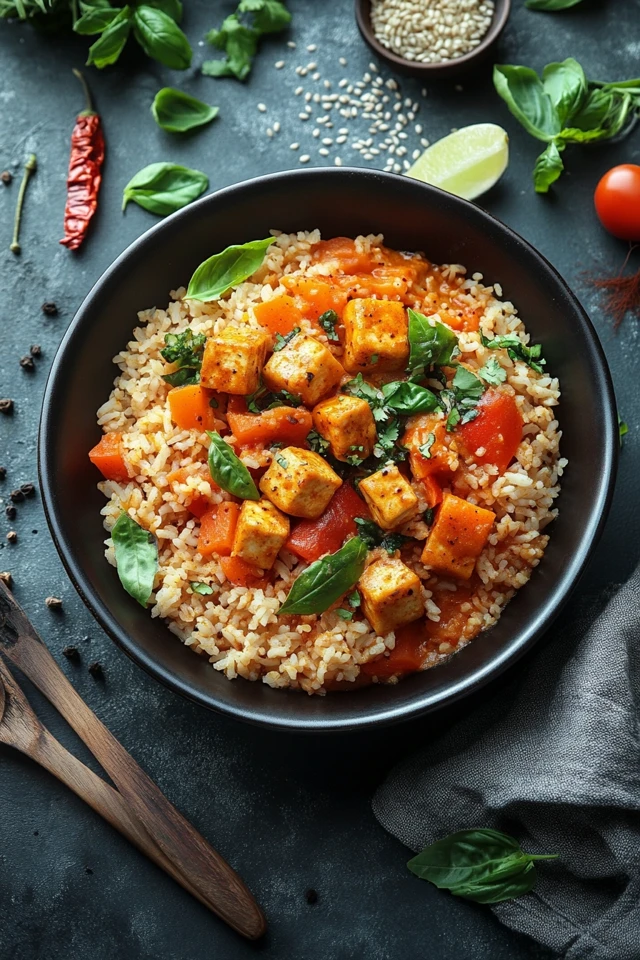
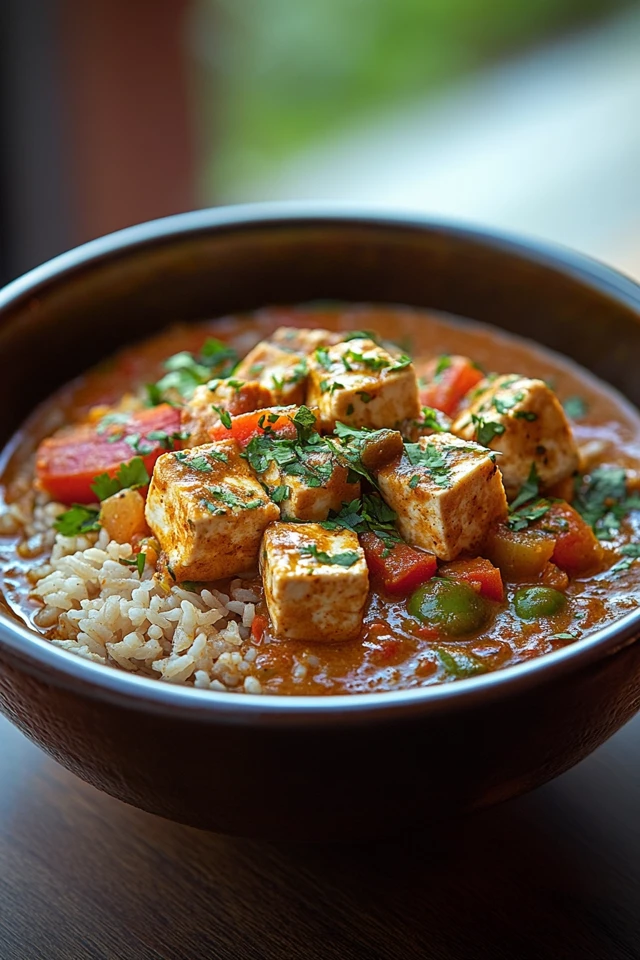
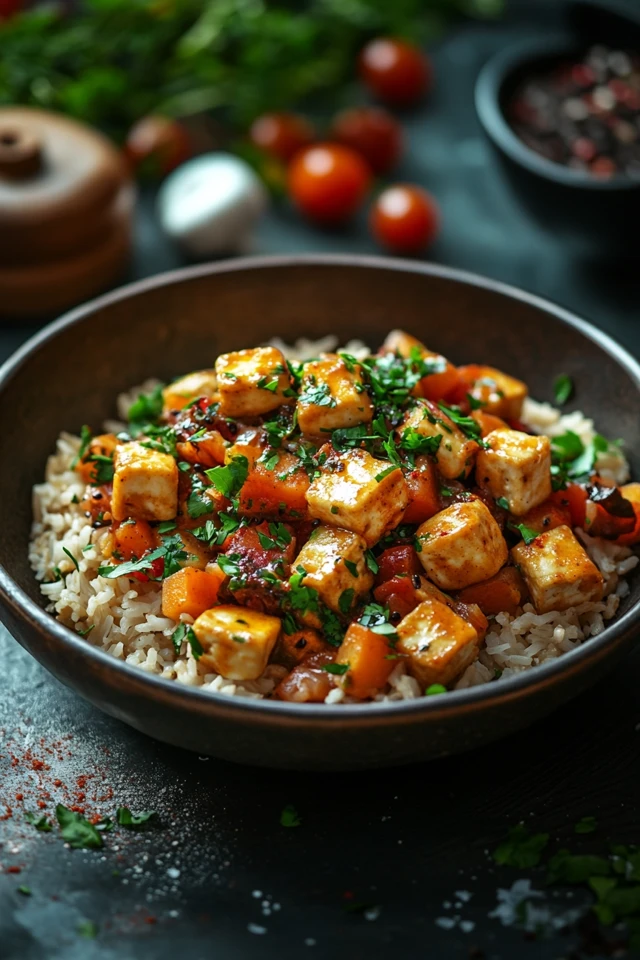
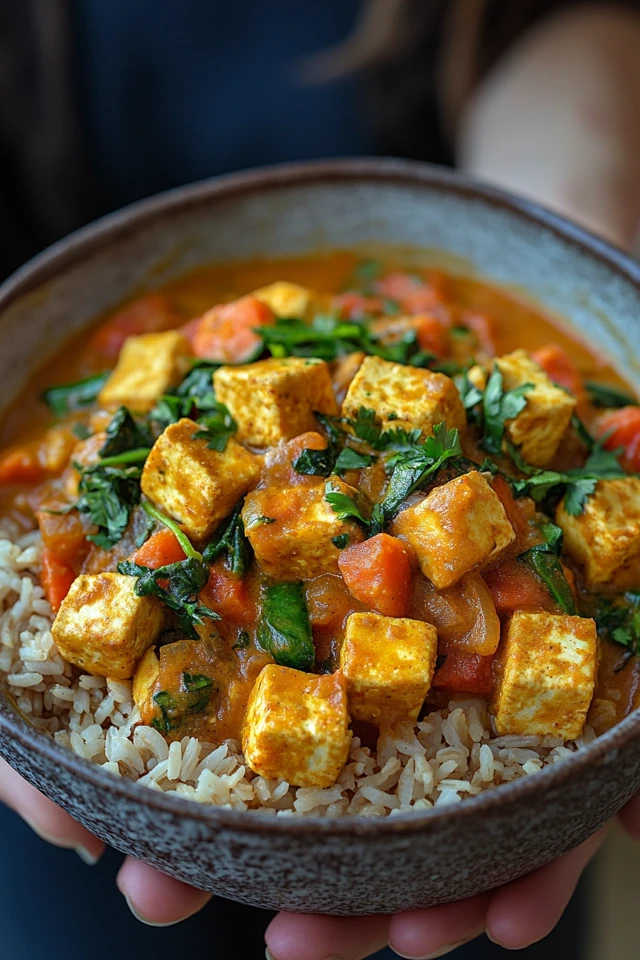
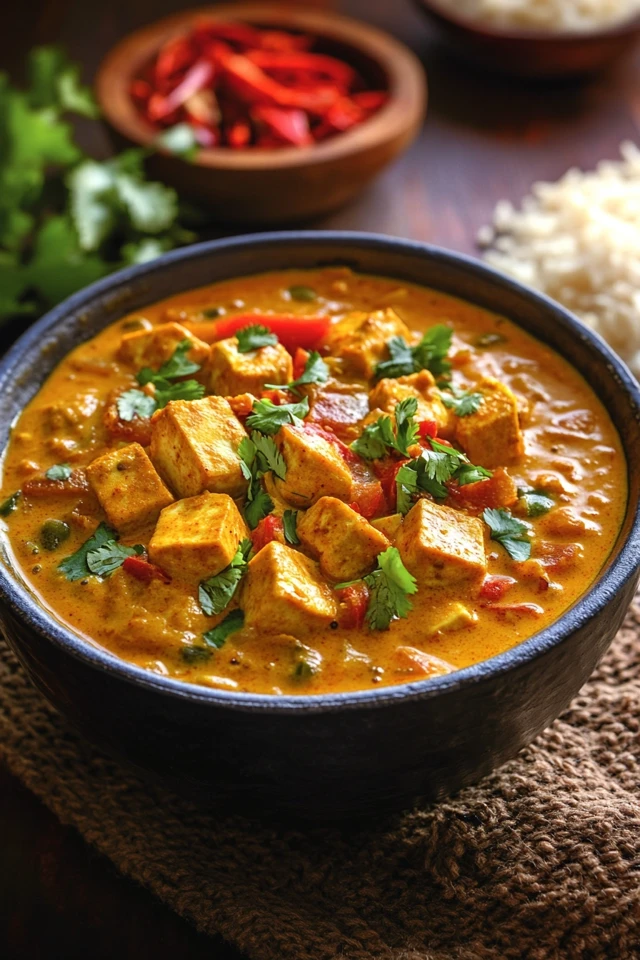
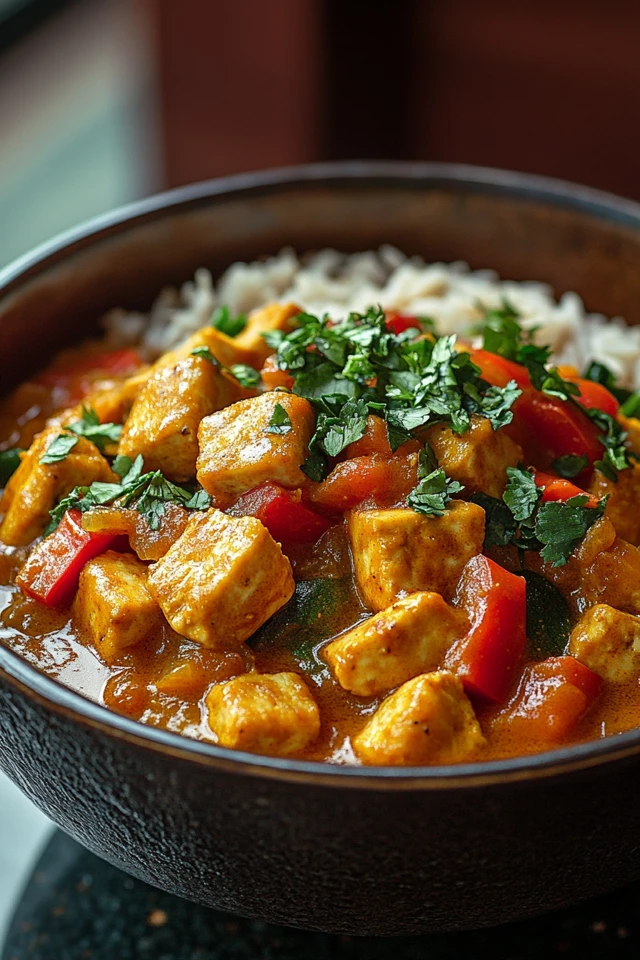
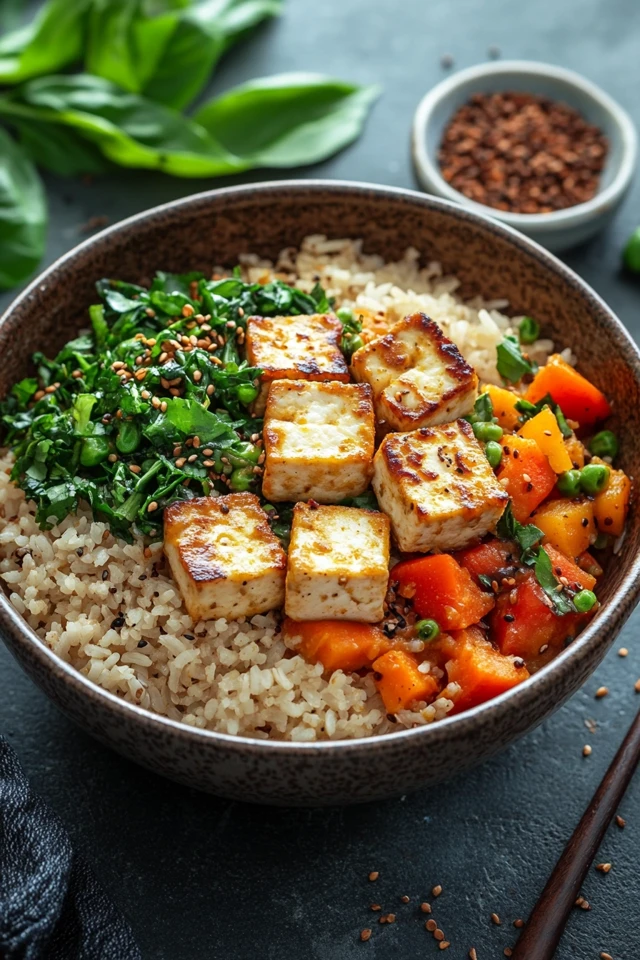
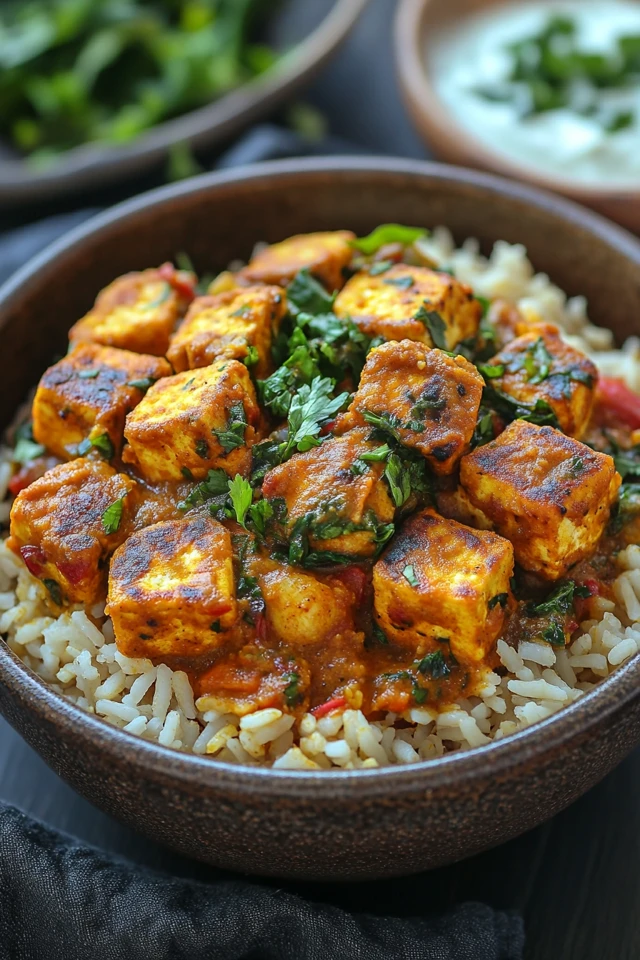
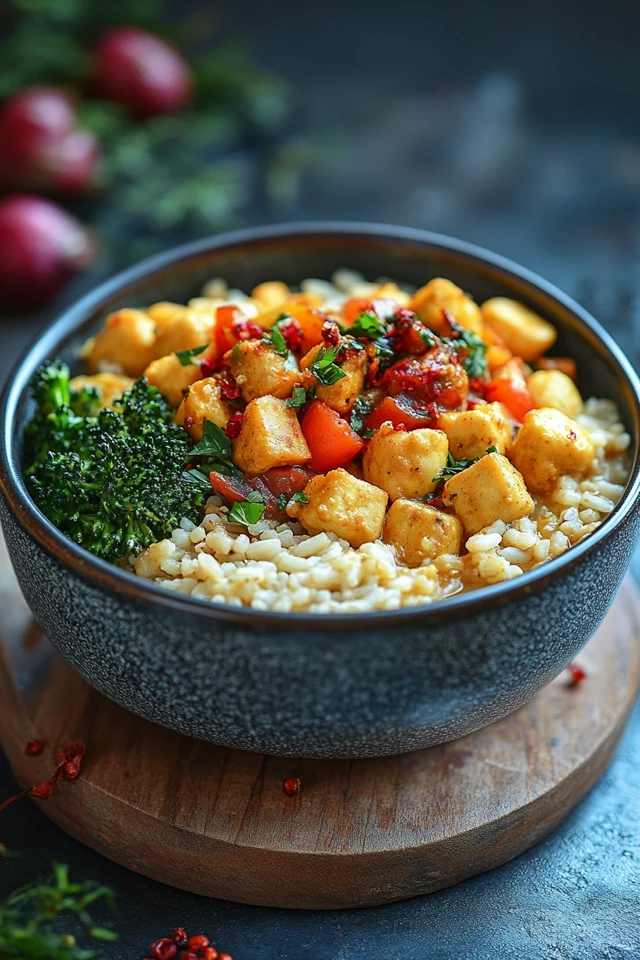
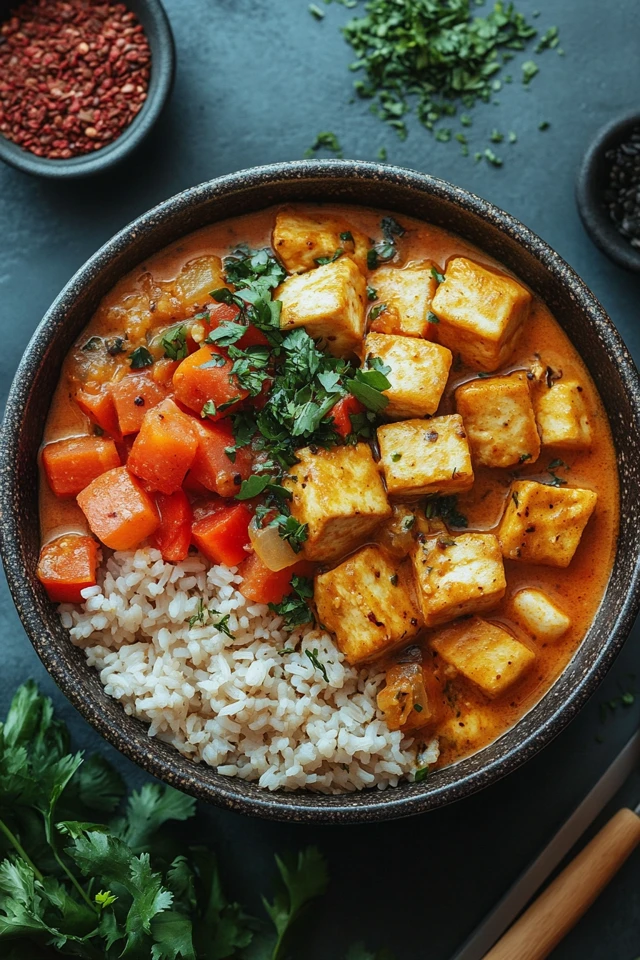
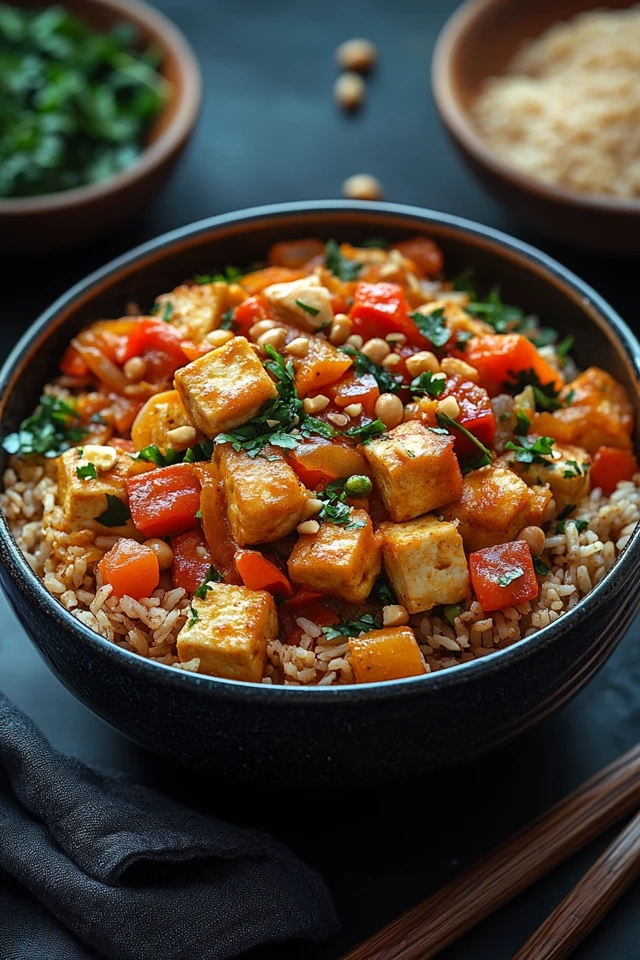
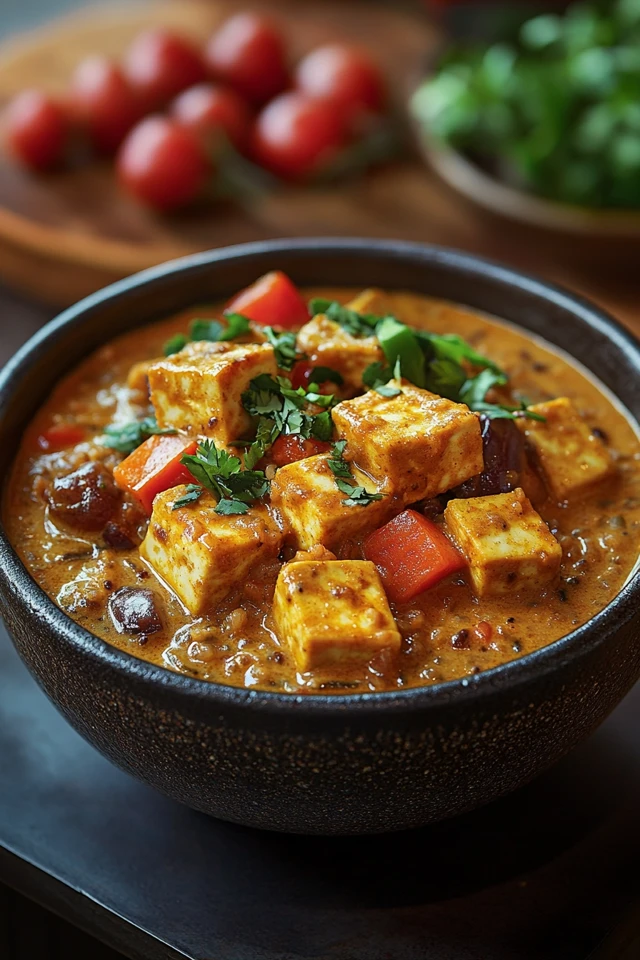
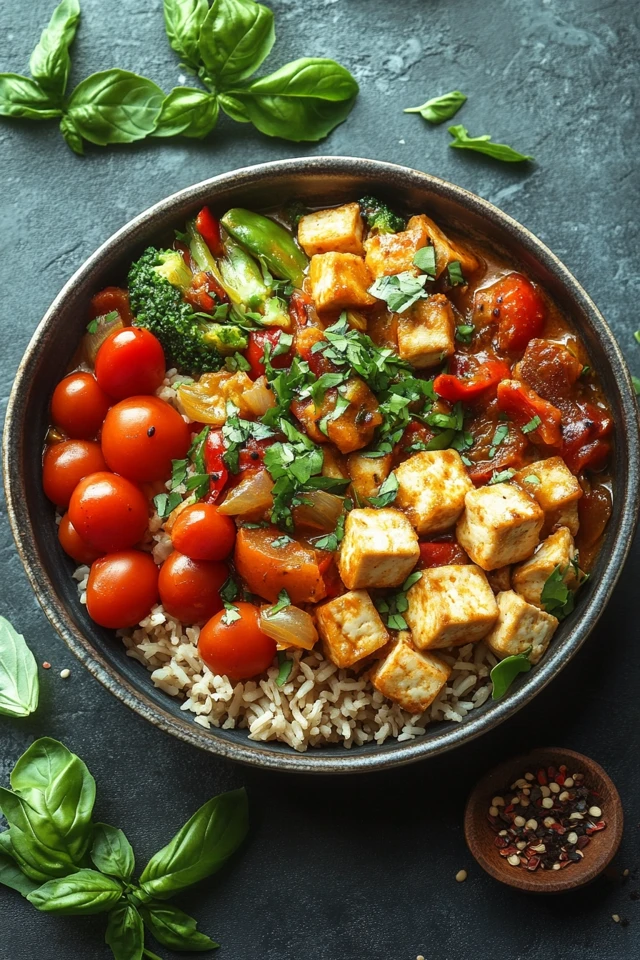
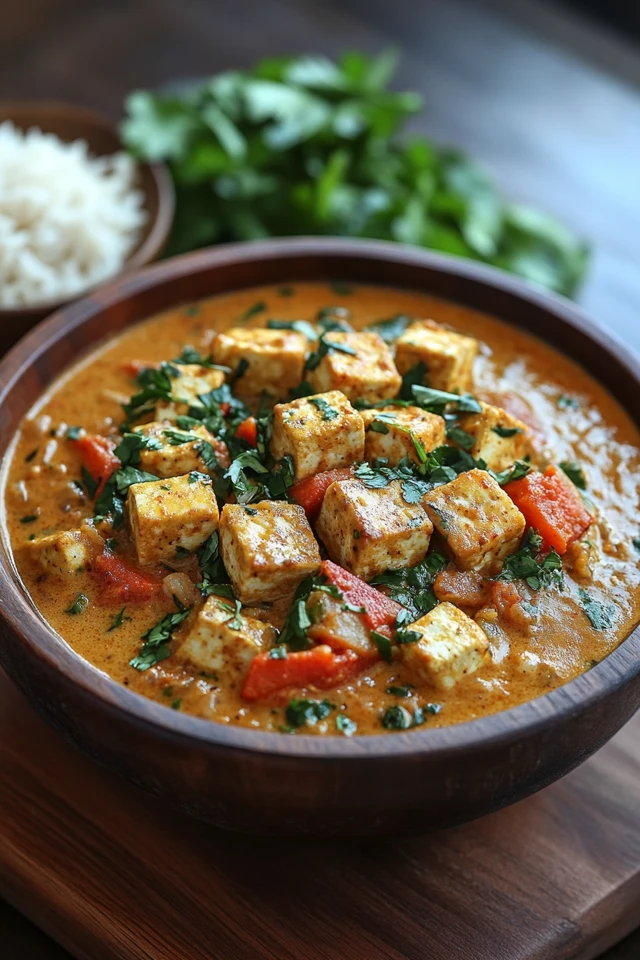
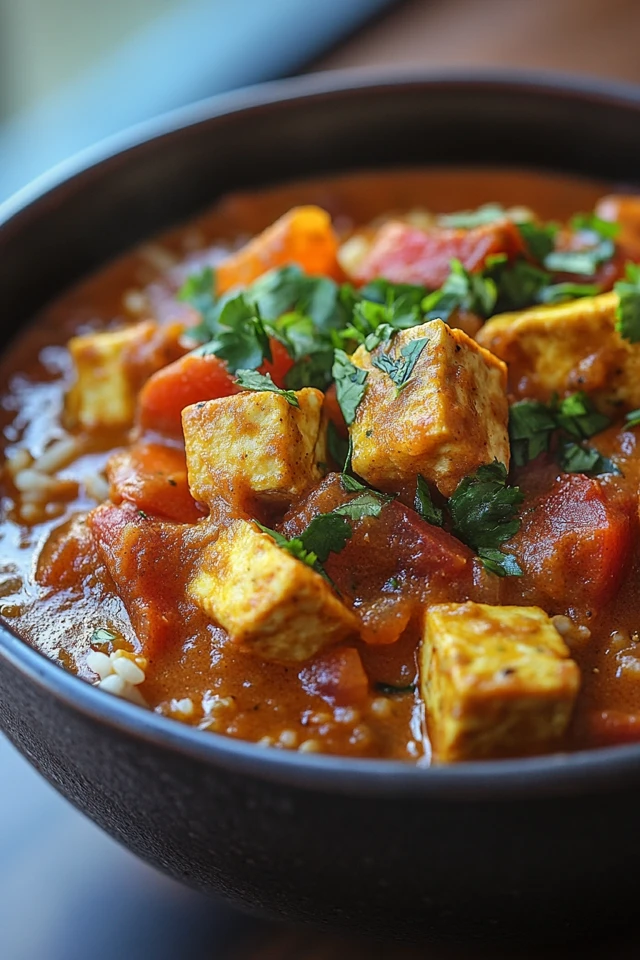
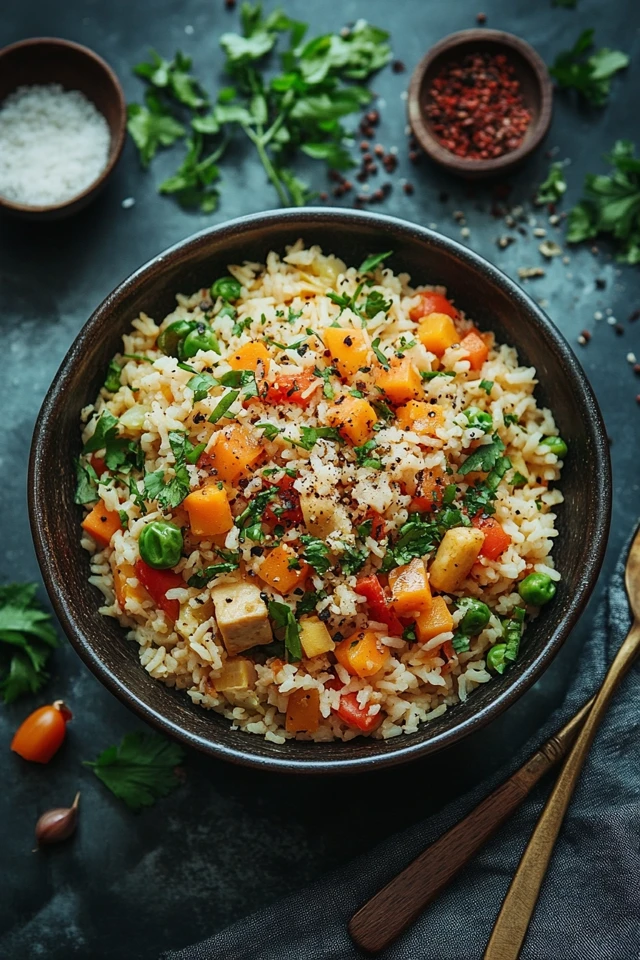
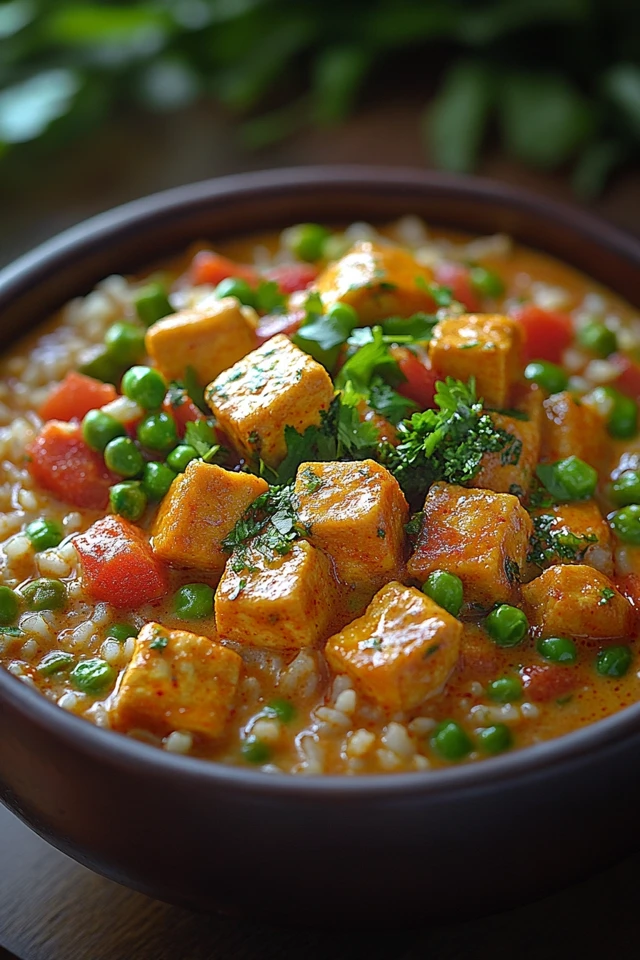
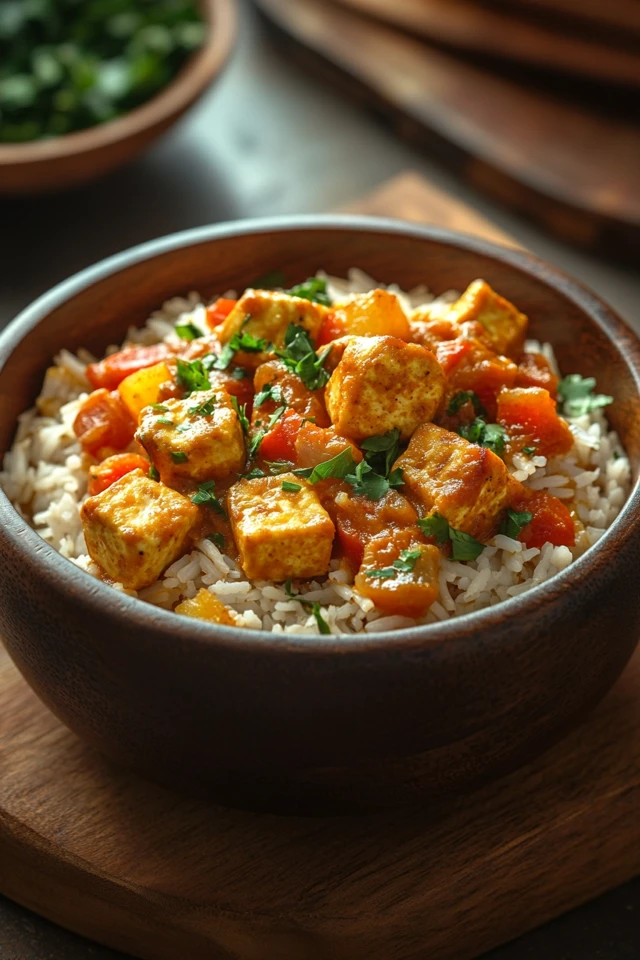
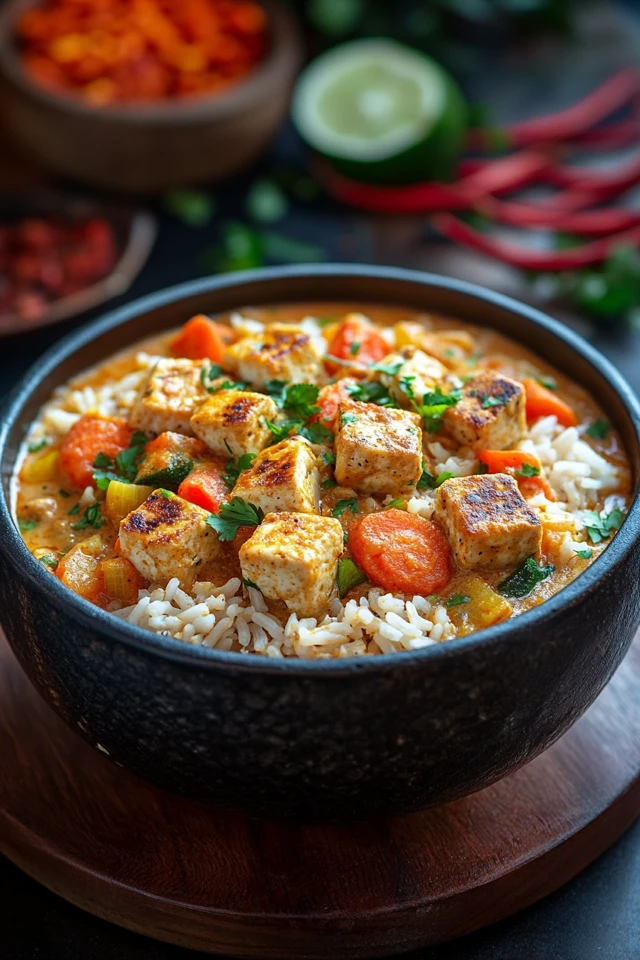
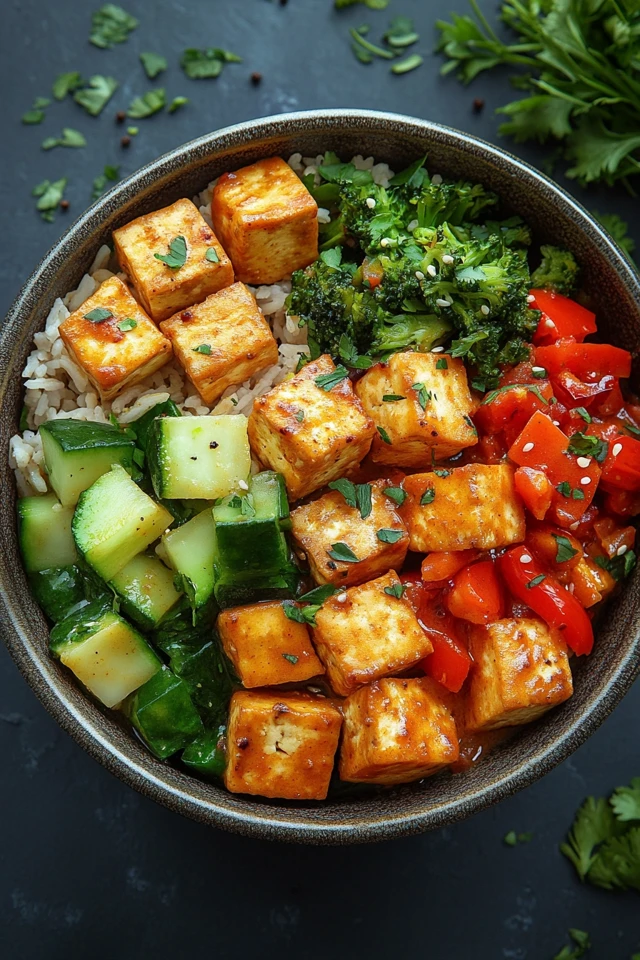
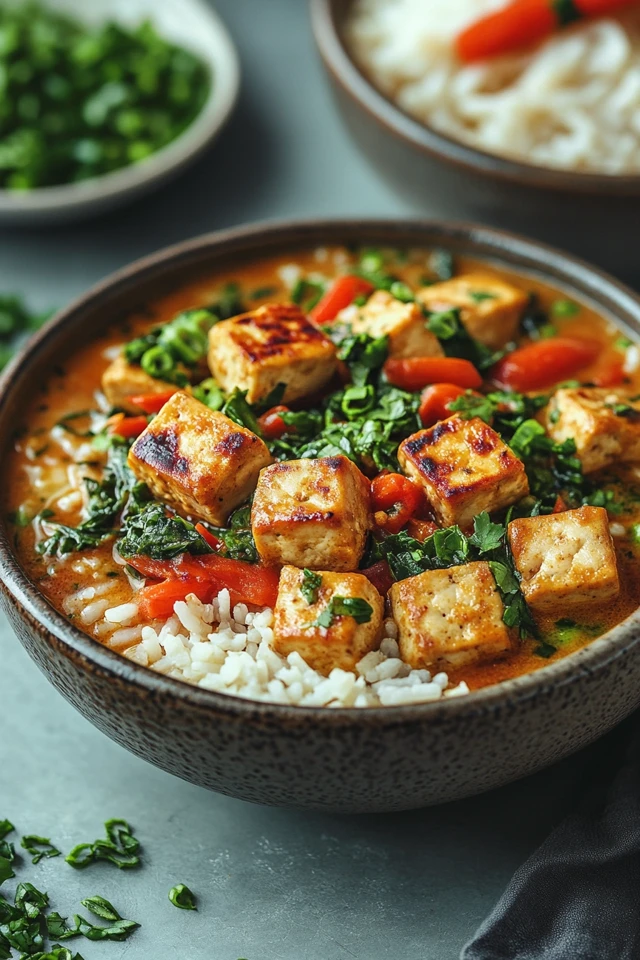
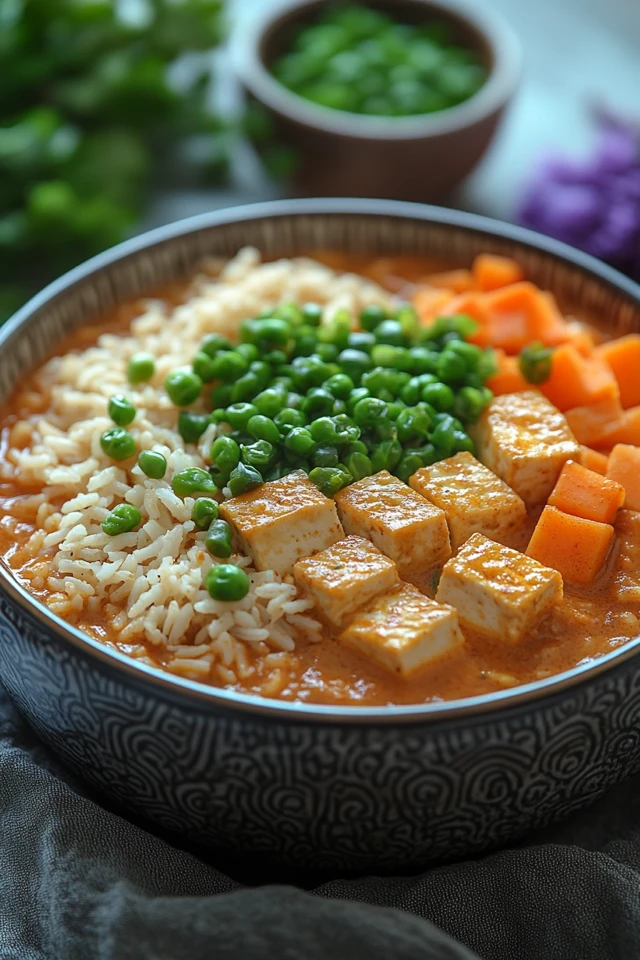
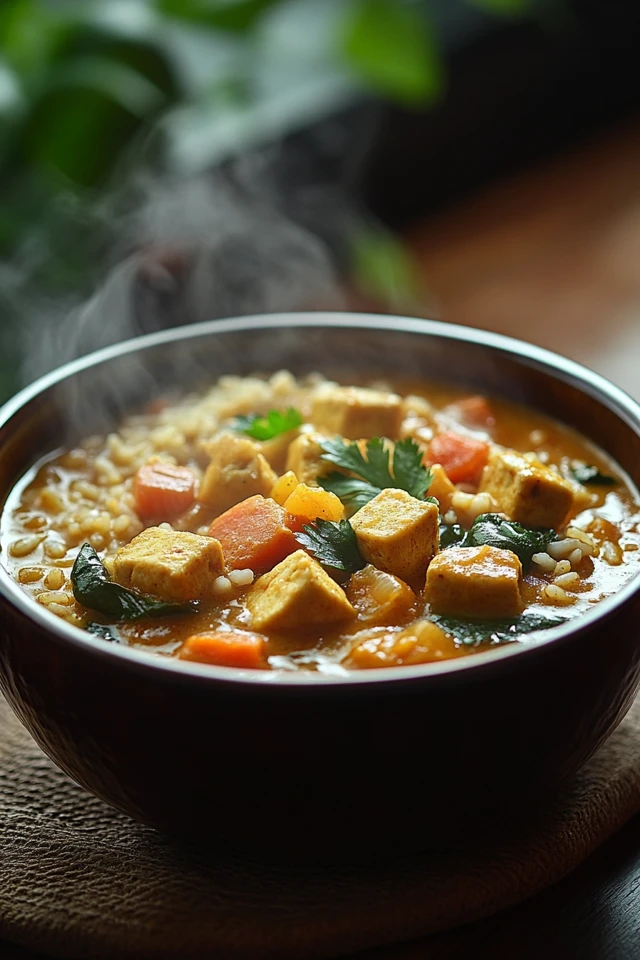
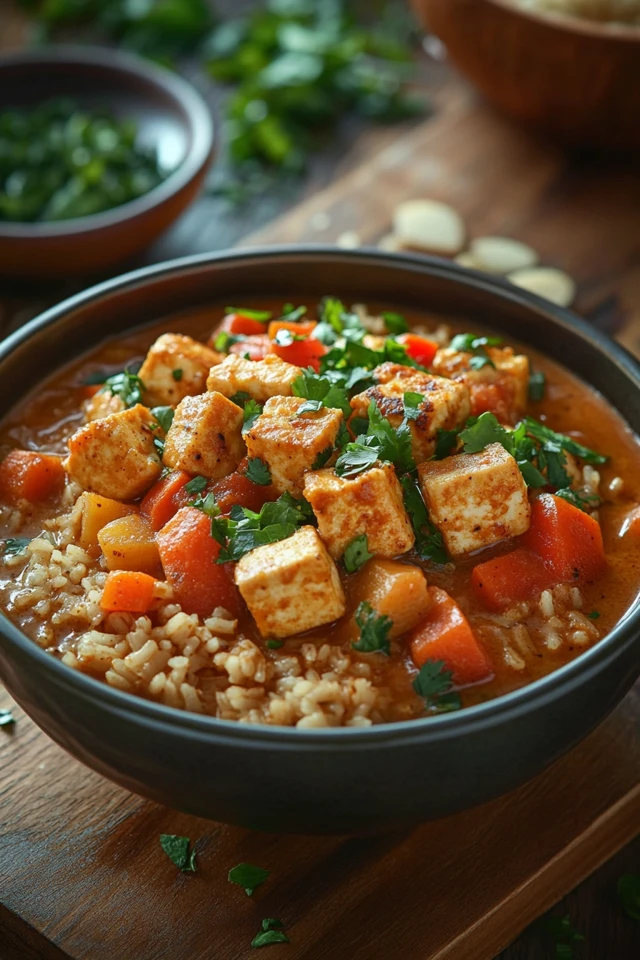
Frequently Asked Questions (FAQs)
1. Can I make this curry ahead of time?
Absolutely! Coconut Curry with Brown Rice can be prepared in advance and stored in the refrigerator for up to 5 days. This makes it an excellent option for meal prepping. Reheat the curry gently on the stovetop or in the microwave before serving.
2. What can I substitute for chickpeas?
If you prefer, you can substitute chickpeas with lentils, black beans, or kidney beans. These alternatives provide a similar hearty texture and protein boost, ensuring your curry remains satisfying and nutritious.
3. How can I make this curry spicier?
For a spicier curry, add a diced jalapeño or serrano pepper along with the onions and garlic. You can also incorporate a dash of cayenne pepper or a teaspoon of hot sauce into the curry for an extra kick.
4. Can I use different types of vegetables?
Absolutely! Feel free to customize the curry with your favorite vegetables. Cauliflower, broccoli, carrots, and snap peas are excellent additions that add variety and nutritional value to the dish.
5. Is this recipe suitable for soy allergies?
Yes, this recipe is suitable for soy allergies if you omit or substitute the tofu. You can replace tofu with tempeh, seitan (if gluten is not an issue), or additional chickpeas for a protein boost.
6. How do I prevent the brown rice from sticking together?
Ensure that you rinse the brown rice thoroughly before cooking to remove excess starch. Using a pot with a tight-fitting lid and allowing the rice to steam undisturbed during cooking also helps prevent sticking.
7. Can I use light coconut milk instead of full-fat?
Yes, you can use light coconut milk to reduce the calorie and fat content of the curry. However, full-fat coconut milk provides a richer, creamier texture. If using light coconut milk, consider adding a tablespoon of coconut cream for extra richness.
8. How do I store leftovers?
Store any leftovers in an airtight container in the refrigerator for up to 5 days. To maintain the best texture, keep the brown rice separate from the curry until ready to serve. Reheat the curry gently on the stovetop or in the microwave before combining with the rice.
9. Can I freeze the curry?
Yes, Coconut Curry with Brown Rice freezes well. Transfer the curry and brown rice into separate freezer-safe containers or bags. Label and freeze for up to 3 months. Thaw overnight in the refrigerator before reheating.
10. What can I use instead of coconut milk for a different flavor?
For a different flavor profile, you can substitute coconut milk with cashew cream, almond milk, or oat milk. These alternatives provide a creamy base while offering unique flavors that can complement the spices in the curry.
About the Author
Welcome to Vegan & Plant-Based Kitchen! I’m Julio Arco, a passionate vegan chef dedicated to creating delicious, easy-to-make plant-based recipes that nourish both body and soul. Since embracing a vegan lifestyle in 2010, I’ve been on a culinary journey to explore the endless possibilities of plant-based cooking. From vibrant salads to hearty mains and indulgent desserts, my mission is to inspire and empower you to embrace a compassionate and healthy lifestyle through wholesome food.
Join me on this journey as we explore diverse flavors, experiment with fresh ingredients, and celebrate the beauty of plant-based living. Let’s create, share, and enjoy the goodness of vegan cooking together!
Disclaimer: This blog post is intended for informational purposes only. Always consult with a healthcare professional before making significant changes to your diet.

